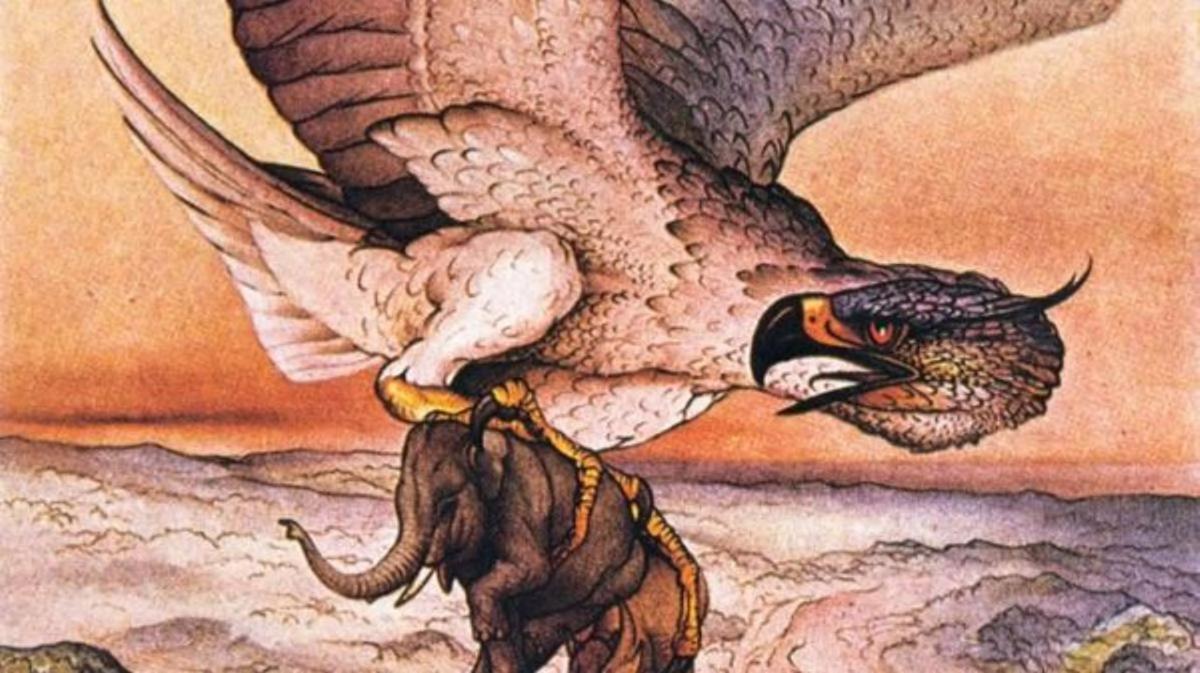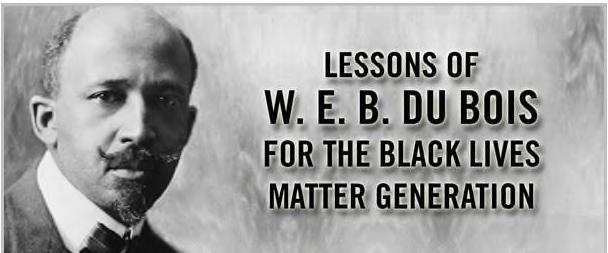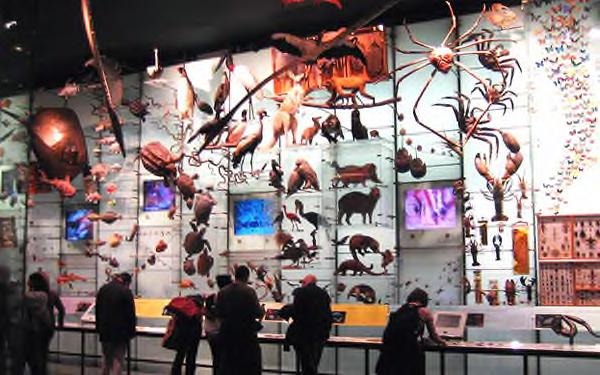
13 minute read
Meet the Bee With a Body That’s Half Male, Half Female Katherine J. Wu
InterpNews
Meet the Bee With a Body That’s Half Male, Half Female!
Advertisement
So-called gynandromorphs are rare, but they can teach us a lot about development and evolution. Male or female?
The face of a sweat bee (Megalopta amoena) that is half female (viewer's left, bee's right) and half male (viewer's right, bee's left) (Chelsey Ritner / Utah State University.)
Katherine J. Wu
SMITHSONIANMAG.COM
In the spring of 2018, Erin Krichilsky stumbled upon the most baffling bee she’d ever seen.
While the right side of its face sported a stout, rugged jawline trimmed with teeny teeth—characteristics normally found on a female—the left half of the insect’s mug had the delicate, wispy features of a male. A quick skim of the rest of the bee’s body revealed much of the same: a she on the right, a he on the left. It was as if someone had cleaved a male bee and a female bee in two and stitched half of each together.
Peering into the microscope at the 4-millimeter-long insect, Krichilsky—then a research assistant at the Smithsonian Tropical Research Institute (STRI) in Panama—realized she’d found something extraordinary. “It was this super cool individual that wasn’t anything like what I was used to seeing,” she recalls. “It was a very exciting day.”
This mysterious insect, described recently in the Journal of Hymenoptera Research, was an exceedingly rare gynandromorph—an animal that is anatomically half male, half female—the first one ever identified in the species Megalopta amoena, a type of sweat bee found in Central and South America.
Unlike hermaphrodites, which often outwardly appear male or female but have the reproductive organs of both, gynandromorphs boast entire bodies that are sexual mosaics. Because of their rarity in nature, these sex-split individuals are poorly understood. Still, researchers have documented gynandromorphs in creatures ranging from butterflies and crustaceans to reptiles and birds—all with literally mixed results.
One other Megalopta gynandromorph has shown its face to scientists before: a male-female hybrid in a closely related sweat bee species called Megalopta genalis, identified in 1999. In the two decades since, STRI researchers have collected and analyzed tens of thousands of other bees without uncovering a second example—making the new Megalopta amoena specimen’s recent and serendipitous appearance a welcome encore act, says Krichilsky.
The team didn’t analyze the bee’s genes to confirm its gynandromorph status. But the insect’s asymmetrical anatomy was kind of a dead giveaway, says study author Adam Smith, a biologist at George Washington University.
Generally speaking, bees, wasps and ants—which belong to the group Hymenoptera—live in matriarchal societies in which females “do all the things that make bees interesting,” Smith says. “They collect pollen, build nests, take care of the kids.” As such, evolution has equipped these ladies with traits compatible with their endless list of chores: strong jaws capable of digging into wood; thick, hairy hindlegs that can snare and transport pollen; and a sharp-tipped stinger for defense.
Males, however, “do nothing useful except mate,” Smith says, and have the feeble physique to match.
Though the researchers aren’t sure how exactly this bizarre bee came to be, studies in similar insects might provide some hints. Several years ago, another team of scientists led by University of Sydney bee expert Benjamin Oldroyd analyzed the genes of several honeybee gynandromorphs and found that the male-female hybrids were likely the result of a developmental mishap.
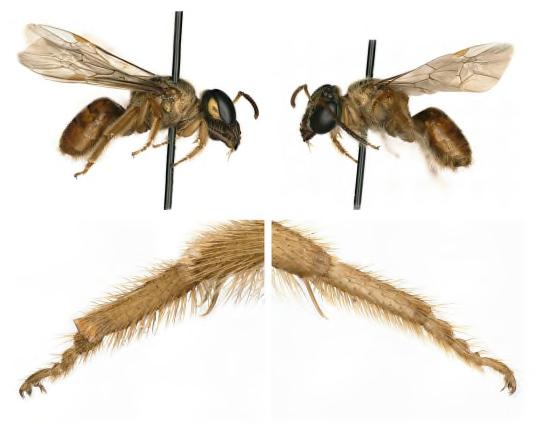
In humans, biological sex is determined by two sex chromosomes—one from mom and one from dad. Inheriting two X’s yields a female, while an X paired with a Y creates a male. But bees do things a little differently. All fertilized eggs, which carry genetic material from a mother and a father, hatch female bees. Unfertilized eggs, however, can still yield offspring: fatherless males that carry only one set of chromosomes from their mothers—half of what’s found in females. Sex, in other words, is determined by the quantity of genetic information in a bee’s cells. On very, very rare occasions, a second sperm can sneak its way into an already-fertilized egg—a wouldbe female—and start copying itself, Oldroyd explains. This creates two asymmetrical lineages that each populate their own half of the growing embryo: One arising from the union of the egg and the first sperm that develops as female, and another, born out solely from the second, freewheeling sperm. Because this second sperm never partners up with its own egg, the chromosome count in its lineage stays low, creating only male cells.
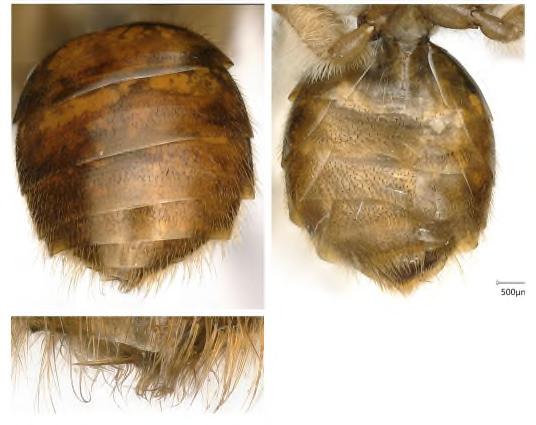
These double fertilization events seem to explain at least some honeybee gynandromorphs, though malefemale hybrids in other species can manifest in other ways. Another explanation might involve a cell in a typical female embryo making a mistake while copying itself, generating one female cell and one male cell instead of two female cells. Those new cells would then go on dividing independently, yielding two sexually divergent lines.
A sweat bee that is 1//2 female (right side of the body) and ½ male (left side of the body). Either or neither of these scenarios may have played out in the new Megalopta bee, which has since been immortalized in the STRI’s collections. Without dissecting the specimen and analyzing its genome, researchers can’t tell.
Before the Megalopta bee died, though, Krichilsky and her colleagues decided to perform a different sort of test: tracking its daily sleep cycle. When they plopped the insect in an activity monitor, they found it woke up a little earlier to forage for food than typical males and females of its species.
With only one specimen to study, the team can’t draw firm conclusions about this behavioral quirk. “Maybe it’s weird because it’s a gynandromorph,” Smith says. “Or it’s just weird because it’s weird.”
Still, the team’s findings are notable simply because they include any behavioral data at all, says Sydney Cameron, an entomologist at the University of Illinois at Urbana-Champaign who wasn’t involved in the study. Most gynandromorphs are discovered only after they’ve died and been stowed in museum collections, making it impossible to know how they navigated their surroundings and social relationships in life. Though
this specimen can’t speak for all gynandromorphs, Cameron says, its actions are interesting to document.
Many, if not most, gynandromorphs are likely infertile, and probably aren’t founding new species themselves. But developmental changes that blur the anatomical lines between sexes can still drive evolution in other contexts, Smith says. In some parasitic bees, for instance, females have lost many of the usual traits that feminize other species, and can appear almost male. This sort of sexual fluidity “probably happens more often than we’re aware of” in nature, Krichilsky says. “There are some niches occupied by a more typically female or male. Maybe [some individuals] can occupy something in between, or both—or become a whole new organism.” Unusual though they are, gynandromorphs “are still bees, just like other bees,” she says. “And we can learn a lot from them.”
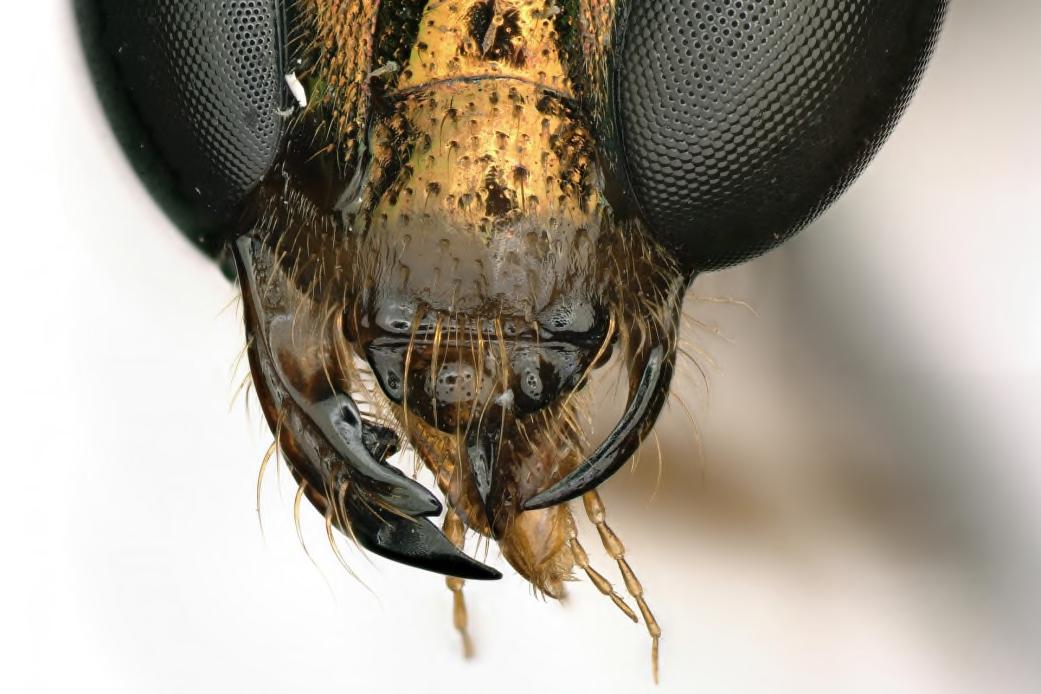
Male or Female?

Interpreting the Day of the Interpreting the Day of the Dead Dead - 3000 years of cultural heritage. cultural heritage.
The Arizona Republic The Arizona Republic
More than 500 years ago, when the Spanish Conquistadors landed in what is now central Mexico, they More than 500 years ago, when the Spanish Conquistadors landed in what is now central Mexico, they encountered natives practicing a ritual that seemed to mock death. encountered natives practicing a ritual that seemed to mock death.
Read more: http://www.azcentral.com/ent/dead/articles/dead http://www.azcentral.com/ent/dead/articles/dead-history.html#ixzz4CjALosg3 history.html#ixzz4CjALosg3 It was a ritual the indigenous people had been practicing at least 3,000 years. A ritual It was a ritual the indigenous people had been practicing at least 3,000 years. A ritual the Spaniards would try unsuccessfully to eradicate.
A ritual known today as Dia de los Muertos, or Day of the Dead. A ritual known today as Dia de los Muertos, or Day of the Dead.
Dia de los Muertos is celebrated in Mexico and certain parts of the United States, including metro Phoenix. Dia de los Muertos is celebrated in Mexico and certain parts of the United States, including metro Phoenix. Although the ritual has since been merged with Catholic theology, it still maintains the basic principles of the been merged with Catholic theology, it still maintains the basic principles of the Aztec ritual, such as the use of skulls. Aztec ritual, such as the use of skulls.
Today, people don wooden skull masks called calacas and dance in honor of their deceased relatives. The Today, people don wooden skull masks called calacas and dance in honor of their deceased relatives. The wooden skulls also are placed on altars that are dedicated to the dead. Sugar skulls, made with the names of ced on altars that are dedicated to the dead. Sugar skulls, made with the names of the dead person on the forehead, are eaten by a relative or friend, according to Mary J. Adrade, who has the dead person on the forehead, are eaten by a relative or friend, according to Mary J. Adrade, who has written three books on Dia de los Muertos. written three books on Dia de los Muertos.
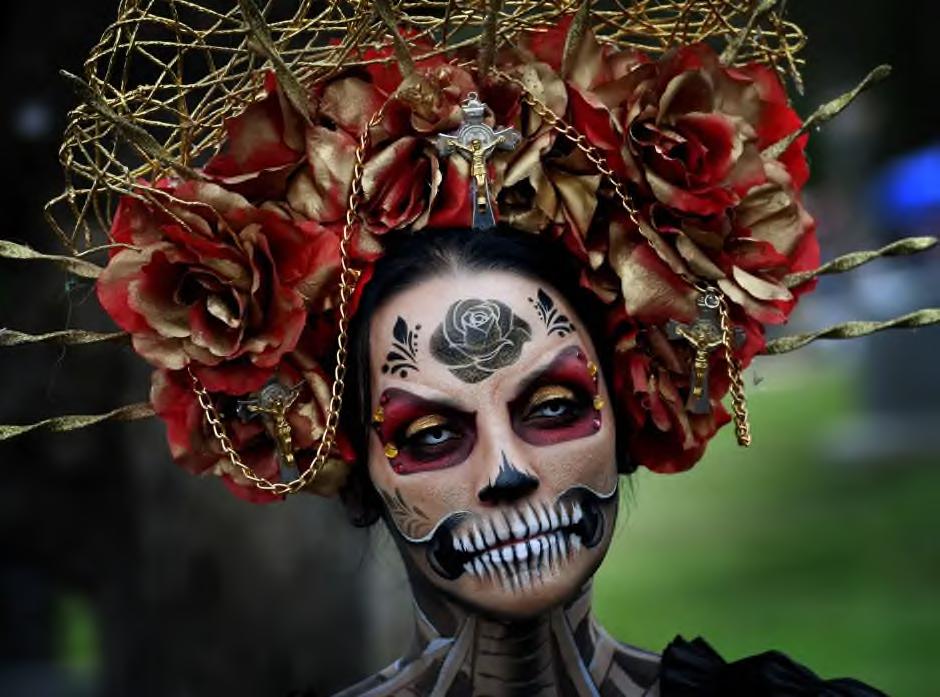
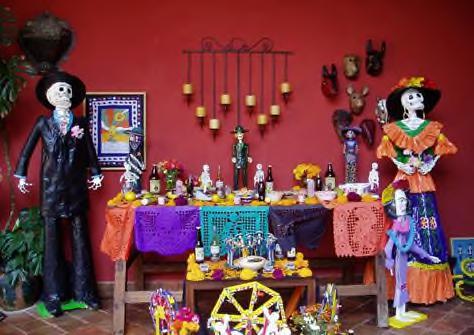
InterpNews
The Aztecs and other Meso-American civilizations kept skulls as trophies and displayed them during the ritual. The skulls were used to symbolize death and rebirth.
The skulls were used to honor the dead, whom the Aztecs and other Meso-American civilizations believed came back to visit during the month long ritual.
Read more: http://www.azcentral.com/ent/dead/articles/dead-history.html#ixzz4CjAGNQEd
The skulls were used to honor the dead, whom the Aztecs and other Meso-American civilizations believed came back to visit during the month long ritual.
Unlike the Spaniards, who viewed death as the end of life, the natives viewed it as the continuation of life. Instead of fearing death, they embraced it. To them, life was a dream and only in death did they become truly awake.
"The pre-Hispanic people honored duality as being dynamic," said Christina Gonzalez, senior lecturer on Hispanic issues at Arizona State University. "They didn't separate death from pain, wealth from poverty like they did in Western cultures."
However, the Spaniards considered the ritual to be sacrilegious. They perceived the indigenous people to be barbaric and pagan.
In their attempts to convert them to Catholicism, the Spaniards tried to kill the ritual. But like the old Aztec spirits, the ritual refused to die.
To make the ritual more Christian, the Spaniards moved it so it coincided with All Saints' Day and All Souls' Day (Nov. 1 and 2), which is when it is celebrated today.
Previously it fell on the ninth month of the Aztec Solar Calendar, approximately the beginning of August, and was celebrated for the entire month. Festivities were presided over by the goddess Mictecacihuatl. The goddess, known as "Lady of the Dead," was believed to have died at birth, Andrade said.
Today, Day of the Dead is celebrated in Mexico and in certain parts of the United States and Central America. "It's celebrated different depending on where you go," Gonzalez said.
In rural Mexico, people visit the cemetery where their loved ones are buried. They decorate gravesites with marigold flowers and candles. They bring toys for dead children and bottles of tequila to adults. They sit on picnic blankets next to gravesites and eat the favorite food of their loved ones.
In Guadalupe, the ritual is celebrated much like it is in rural Mexico.
"Here the people spend the day in the cemetery," said Esther Cota, the parish secretary at the Our Lady of Guadalupe Church. "The graves are decorated real pretty by the people."
In Mesa, the ritual has evolved to include other cultures, said Zarco Guerrero, a Mesa artist.
"Last year, we had Native Americans and African-Americans doing their own dances," he said. "They all want the opportunity to honor their dead."
In the United States and in Mexico's larger cities, families build altars in their homes, dedicating them to the dead. They surround these altars with flowers, food and pictures of the deceased. They light candles and place them next to the altar.
"We honor them by transforming the room into an altar," Guerrero said. "We offer incense, flowers. We play their favorite music, make their favorite food."
At Guerrero's house, the altar is not only dedicated to friends and family members who have died, but to others as well.
"We pay homage to the Mexicans killed in auto accidents while being smuggled across the border," he said.
Read more: http://www.azcentral.com/ent/dead/articles/dead-history.html#ixzz4CjA8CMH5




Interpreting Halloween


The History Channel Staff.

Straddling the line between fall and winter, plenty and paucity, life and death, Halloween is a time of celebration and superstition. It is thought to have originated with the ancient Celtic festival of Samhain, when people would light bonfires and wear costumes to ward off roaming ghosts. In the eighth century, Pope Gregory III designated November 1 as a time to honor all saints and martyrs; the holiday, All Saints’ Day, incorporated some of the traditions of Samhain. The evening before was known as All Hallows’ Eve and later Halloween. Over time, Halloween evolved into a secular, community-based event characterized by child-friendly activities such as trick-or-treating. In a number of countries around the world, as the days grow shorter and the nights get colder, people continue to usher in the winter season with gatherings, costumes and sweet treats.
ANCIENT ORIGINS OF HALLOWEEN
Halloween’s origins date back to the ancient Celtic festival of Samhain (pronounced sow-in). The Celts, who lived 2,000 years ago in the area that is now Ireland, the United Kingdom and northern France, celebrated their new year on November 1. This day marked the end of summer and the harvest and the beginning of the dark, cold winter, a time of year that was often associated with human death. Celts believed that on the night before the new year, the boundary between the worlds of the living and the dead became blurred. On the night of October 31 they celebrated Samhain, when it was believed that the ghosts of the dead returned to earth. In addition to causing trouble and damaging crops, Celts thought that the presence of the otherworldly spirits made it easier for the Druids, or Celtic priests, to make predictions about the future. For a people entirely dependent on the volatile natural world, these prophecies were an important source of comfort and direction during the long, dark winter.
To commemorate the event, Druids built huge sacred bonfires, where the people gathered to burn crops and animals as sacrifices to the Celtic deities. During the celebration, the Celts wore costumes, typically consisting of animal heads and skins, and attempted to tell each other’s fortunes. When the celebration was over, they re-lit their hearth fires, which they had extinguished earlier that evening, from the sacred bonfire to help protect them during the coming winter.
By 43 A.D., the Roman Empire had conquered the majority of Celtic territory. In the course of the four hundred years that they ruled the Celtic lands, two festivals of Roman origin were combined with the traditional Celtic celebration of Samhain. The first was Feralia, a day in late October when the Romans traditionally commemorated the passing of the dead. The second was a day to honor Pomona, the Roman goddess of fruit and trees. The symbol of Pomona is the apple and the incorporation of this celebration into Samhain probably explains the tradition of “bobbing” for apples that is practiced today on Halloween.


